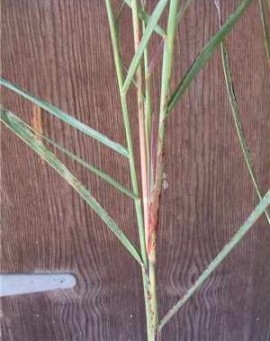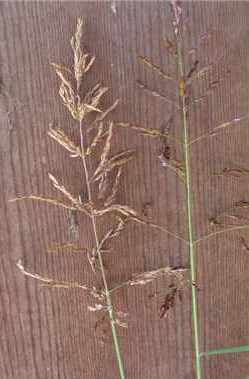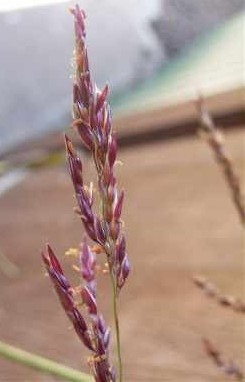Scientific Name
Sorghum halepense (L.) Persoon
Johnson Grass, aleppo grass, aleppo milletgrass
Common Names
Poaceae
Family
Mediterranean region of Europe; southern Eurasia (primarily Turkey and Syria)
Origin
Coarse perennial grass to 2m high growing from long, thick, well developed creeping rhizomes, it can spread rapidly onto cultivated lands. Sorghum halepense tends to be difficult to control and can cause problems as it can cross-pollinate with other sorghums, causing seed contamination.
Habit
Moist habitats, sub-tropics and Mediterranean climatic zones. It is often found on agricultural land, roadsides, disturbed and wet areas, railway easements and canal banks.
Habitat
Stems and Leaves:
Slender plant with numerous erect stems up to 2m high and 3-9mm thick. The leaf sheaths are essentially glabrous (hairless) and ribbed. The leaves are narrow, alternate, simple, smooth and are 30-60cm long and 2cm wide, with a prominent white midvein and hairs at the base of the upper surface, otherwise the leaves remain smooth and hairless. At the base of the leaf blade is also a prominent membranous ligule that is 1-3mm long with hairs to 2mm long.
Flowers and Fruit:
Inflorescence (flower head) consists of pendulous panicles (a compound inflorescence with a main axis and lateral branches which are further branched, and in which each axis ends in a flower or bud), often purple in colour, 25-45cm long, and 3-15cm wide which open when mature. The spikelets are borne in pairs along the branches (with the terminal spikelet being a triplet). The lower sessile (without a stalk) spikelet contains the seed. The upper spikelet is pedicellate (with a stalk) and is narrower than the lower spikelet. The grain is oblong-ovate and 2-3 mm long. Flowers in the summer months. Hybridises with grain sorghum (Sorghum bicolor subsp. bicolor)
General Description
Slender plant, with numerous erect stems up to 2m high, arising from extensive, purple-spotted scaly, creeping rhizomes. Leaf sheaths glabrous (without hairs or scales). Pale green to purplish, many branched inflorescence. Spikelets in pairs along or in triplets at the end of panicle branches. Sorghum halepense can be differentiated from Sorghum leiocladum (wild sorghum) in that Sorghum leiocladum has nodes (bump on stem) that are bearded with long hairs and hairy leaf sheaths.
Distinguishing characteristics
Bogdan AV (1977) 'Tropical pasture and fodder plants.' (Longman Group Ltd: London)
Breakwell E (1923) 'The grasses and fodder plants of NSW.' (Government Printer: Sydney)
Harden GJ (Ed) (2002) 'Flora of New South Wales.' (University of New South Wales Press Ltd: Sydney, Australia)
Parsons WT, Cuthbertson EG (2001) 'Noxious weeds of Australia.' 2nd edn. (CSIRO publishing: Collingwood, Victoria)
Smith WC, Frederiksen RA (Eds) (2000) 'Sorghum: Origin, history, technology and production.' (John Wiley and Sons Inc: New York)
Global invasive species database (2004)
Department of Business, Industry and Resource Development Northern Territory (1999)
Prepared by Kylie Pethybridge, 2005
Checked by Carole Campbell, 2005
Updated by Justin KY Chu, July 2005
Checked by Dr Peter Michael, July 2005


